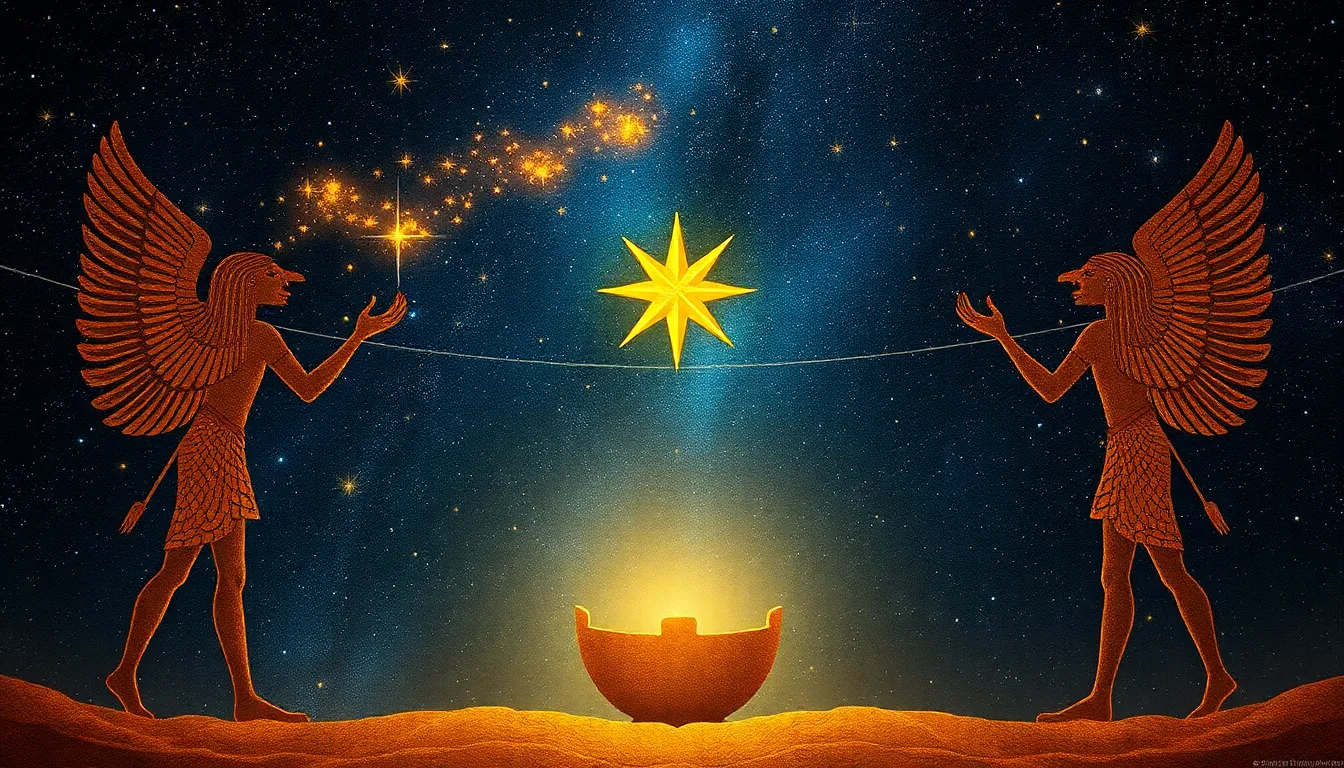The Role of the Stars in Egyptian Medicine and Healing Practices
I. Introduction
Ancient Egyptian medicine was a complex blend of practical healing techniques and spiritual beliefs. The Egyptians possessed a wealth of medical knowledge, underpinned by their understanding of the human body and the natural world. However, this knowledge was often intertwined with their profound reverence for the celestial bodies that adorned their night sky.
The stars and planets held significant importance in Egyptian culture, representing divine forces that influenced life on Earth. This article explores the intricate relationship between celestial phenomena and ancient Egyptian medicine, detailing how the stars informed various healing practices and medical understandings.
II. Historical Context of Egyptian Medicine
Medical practices in ancient Egypt were advanced for their time, incorporating surgical techniques, herbal remedies, and spiritual healing. The Egyptians believed that health was a balance between the physical and spiritual realms, and this belief shaped their approach to treatment.
Religion and spirituality played a pivotal role in health and healing. The Egyptians viewed illness as a manifestation of displeasure from the gods or an imbalance in the soul. Consequently, healing often involved not just physical remedies but also rituals to appease deities.
Key figures in Egyptian medicine included:
- Imhotep – A polymath who is often regarded as the first physician in history.
- Hesy-Ra – The first known dentist, serving in the court of Pharaoh Djoser.
- Papyrus Ebers – An ancient medical text that provides insight into the medical knowledge of the time.
III. The Celestial Sphere: An Overview
Ancient Egyptian cosmology was rich and multifaceted, emphasizing a connection between the heavens and the Earth. The Egyptians believed that the stars were the embodiment of the gods and that their movements had a direct influence on earthly events.
The significance of stars and planets in Egyptian belief systems was profound. For instance, the star Sirius, associated with the goddess Isis, marked the annual flooding of the Nile, a crucial agricultural event. This celestial event was seen as a blessing from the gods, directly linked to fertility and abundance.
The concept of divine harmony was central to health. Egyptians believed that maintaining a balance between the physical and spiritual worlds, often reflected in the cosmos, was essential for well-being.
IV. Astrological Influences on Medical Practices
Astrology played a vital role in diagnosing illnesses in ancient Egypt. Medical practitioners often referred to the positions of celestial bodies to interpret symptoms and determine the best course of treatment.
Star charts and celestial calendars were utilized as tools in treatment plans. These celestial maps helped healers identify the most auspicious times for conducting surgeries or administering remedies. Specific illnesses were often linked to astrological signs, influencing the methods used for healing.
For example, certain ailments were thought to be exacerbated by the position of Mars, while conditions related to the lungs were associated with the sign of Gemini. This astrological understanding provided a framework for the Egyptians to approach health care holistically.
V. Healing Rituals and Star Worship
Healing rituals often involved the worship of celestial bodies. Priests and priestesses played a crucial role in these rituals, acting as intermediaries between the gods and the people. They performed ceremonies to invoke divine assistance in healing.
Examples of star-related healing practices included:
- Offering prayers to the goddess Hathor, associated with love and joy, to promote emotional healing.
- Cleansing rituals under the open sky to align the patient with the cosmic energies of the stars.
- Using amulets inscribed with celestial symbols to protect against illness and harm.
VI. The Relationship Between Stars and Anatomy
The ancient Egyptians made fascinating connections between celestial bodies and human anatomy. They believed that different organs were influenced by specific stars or constellations, which guided their surgical and herbal practices.
For instance, the heart, considered the seat of intelligence and emotion, was associated with the star Regulus. The positioning of celestial bodies was thought to affect the success of surgeries performed on particular organs. This understanding influenced the timing and methods used in medical interventions.
The symbolism of stars in anatomical texts was also significant. Medical papyri often contained illustrations and descriptions that linked celestial imagery with human anatomy, reinforcing the belief in the interconnectedness of the universe and the human body.
VII. The Legacy of Egyptian Star-Based Medicine
The influence of ancient Egyptian star-based medicine extended beyond their civilization, impacting later medical practices in the Greco-Roman world. Many Greek physicians, such as Hippocrates and Galen, were inspired by Egyptian medical texts and astrological practices.
Furthermore, the tradition of astrological medicine continued in various forms across different cultures, illustrating the enduring legacy of Egyptian beliefs. Today, elements of astrological medicine can still be found in holistic healing practices that emphasize the connection between the cosmos and human well-being.
Modern understanding of holistic approaches to health often reflects principles established in ancient Egypt, demonstrating how their insights into the relationship between the stars and health have persisted through time.
VIII. Conclusion
In summary, the ancient Egyptians possessed a sophisticated understanding of medicine that was deeply intertwined with their observations of the stars. Their holistic approach to health, which included astrological influences, healing rituals, and the integration of celestial bodies into medical practices, illustrates a profound respect for the cosmos.
The integration of astronomy and medicine in ancient Egypt not only served the practical needs of their society but also reflected their spiritual beliefs. As we reflect on these practices today, it is evident that the wisdom of ancient cultures continues to inform and inspire contemporary healing traditions.




